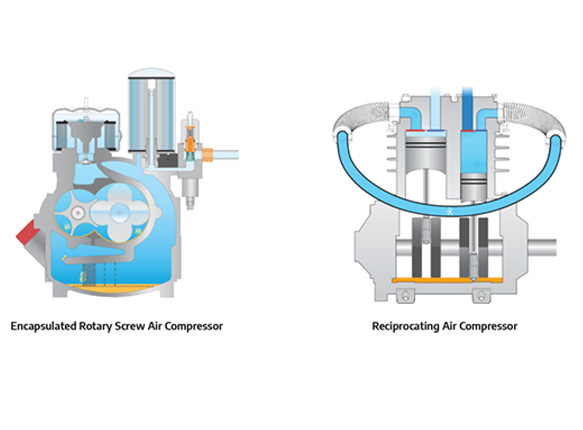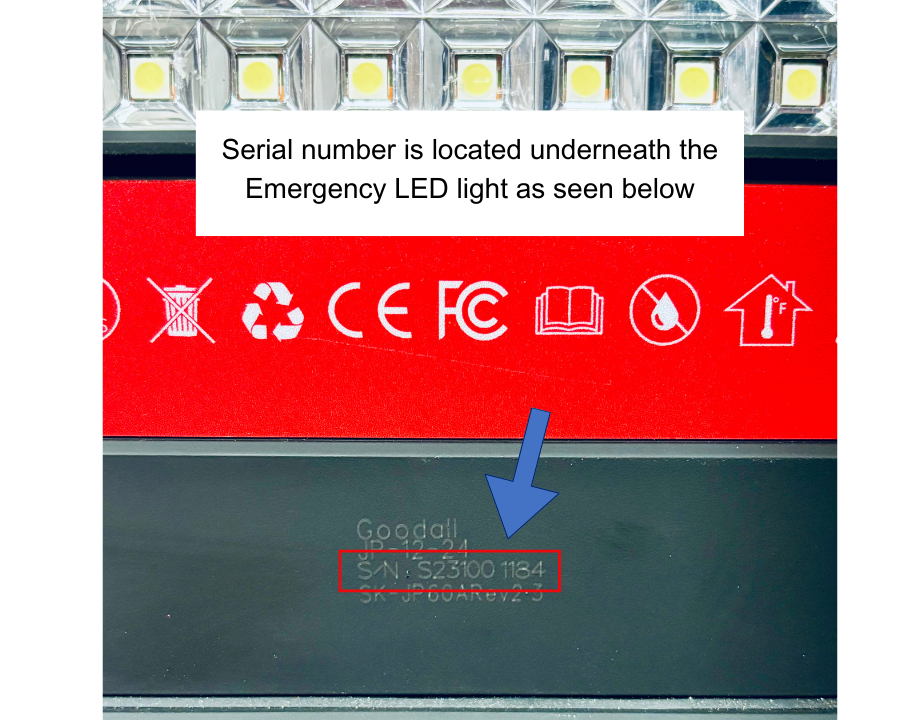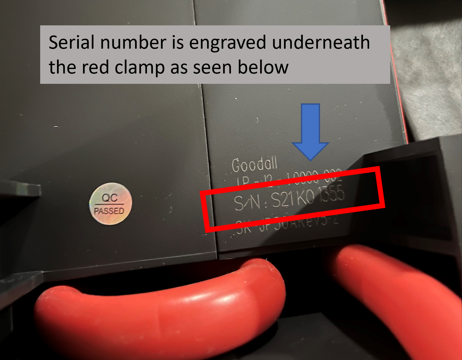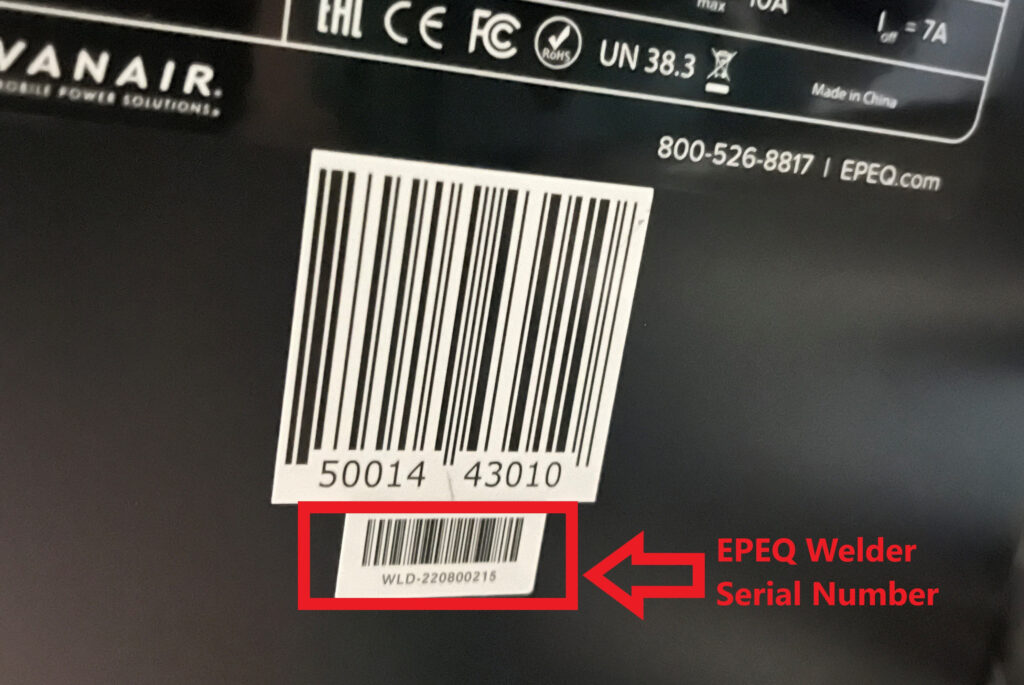Two of the most popular air compressors used today are rotary screw and reciprocating (or piston) compressors. Both are positive displacement compressors and serve similar purposes, which is to bring atmospheric air into a chamber, compress it and discharge compressed air, but do you know the difference between the two?
Rotary Screw Compressors
A rotary screw air compressor is oil-flooded and uses a male and a female helical rotor assembly. As the rotors rapidly spin in a stator (chamber), within very close tolerances, they are separated by a thin layer of oil. The oil inside the unit acts as a lubricant, seals the rotors, and cools the system from the heat of compression. Key benefits to using a rotary screw compressor include:
- Fewer moving parts to wear.
- It provides a large volume of cooled air.
- 100% duty cycle, or air-on-demand.
- 110,000 hour bearing design life.
- Requires less maintenance than other compressors.
- Cooler than reciprocating compressors (runs at 180-210F).
- It provides a welcomed reduction of noise for the operator.
- Vanair® rotary screw compressors offer 10 to 1500 CFM of air power.
Reciprocating Compressors
A reciprocating air compressor works by using pistons driven by a crank shaft to compress the air; very much like an internal combustion engine, this usually provides 30 to 60 CFM of air in mobile applications. A reciprocating compressor works by having a piston that travels downwards towards bottom dead centre (BDC) sucking air into the cylinder from the atmosphere. The piston then begins moving towards top dead centre (TDC) compressing the air. When the pressure reaches its design limit, it pushes the discharge valve open and the compressed air is delivered to an air reservoir. By design, with more moving parts, a reciprocating compressor is only able to operate for a 60% duty cycle and requires downtime to cool. Downtime is required for reciprocating compressor systems since they run extremely hot, usually operating between 300 to 400 degrees Fahrenheit on average.
Drive Mechanisms
Generally, rotary screw compressors can be driven in a multitude of ways, including:
- PTO shaft-driven
- Belt driven
- Hydraulic driven
- By electric motor
All of the above provide flexibility on how to configure your application. Conversely, a reciprocating system is generally V-belt driven.
Application Uses
Rotary screw compressors are designed for heavy-duty, continuous air-on-demand needs and are recommended for applications using 20 horsepower or higher. Applications examples needing extended air use are: sewer rehab, powering pneumatic tools, and pipe testing. Reciprocating compressors are mostly used for medium-duty applications, lower than 20 horsepower, and require an auxiliary tank for air storage. Once the air storage is depleted in the reservoir, the reciprocating compressor must restart and replenish the tank. Reciprocating compressors are best suited for intermittent use, such as for riveting performed by service and tire trucks.
Conclusion
In the end choosing a rotary screw or reciprocating air compressor comes down to a consideration of application use and desired lifespan of operation.
Since 1972, Vanair® has been providing Mobile Power Solutions® and offers the most comprehensive product line of vehicle-mounted: air compressors, generators, welders, hydraulics, Electrified Power Equipment® chargers/boosters, engine starters and custom products in the world. Where you need it, when you need it, and how you need it… Vanair’s there. And we’ll be there for you too. The Vanair team of technical experts are here to help and only a call away at 1.800.526.8817 or an e-mail away at media@vanair.com.




